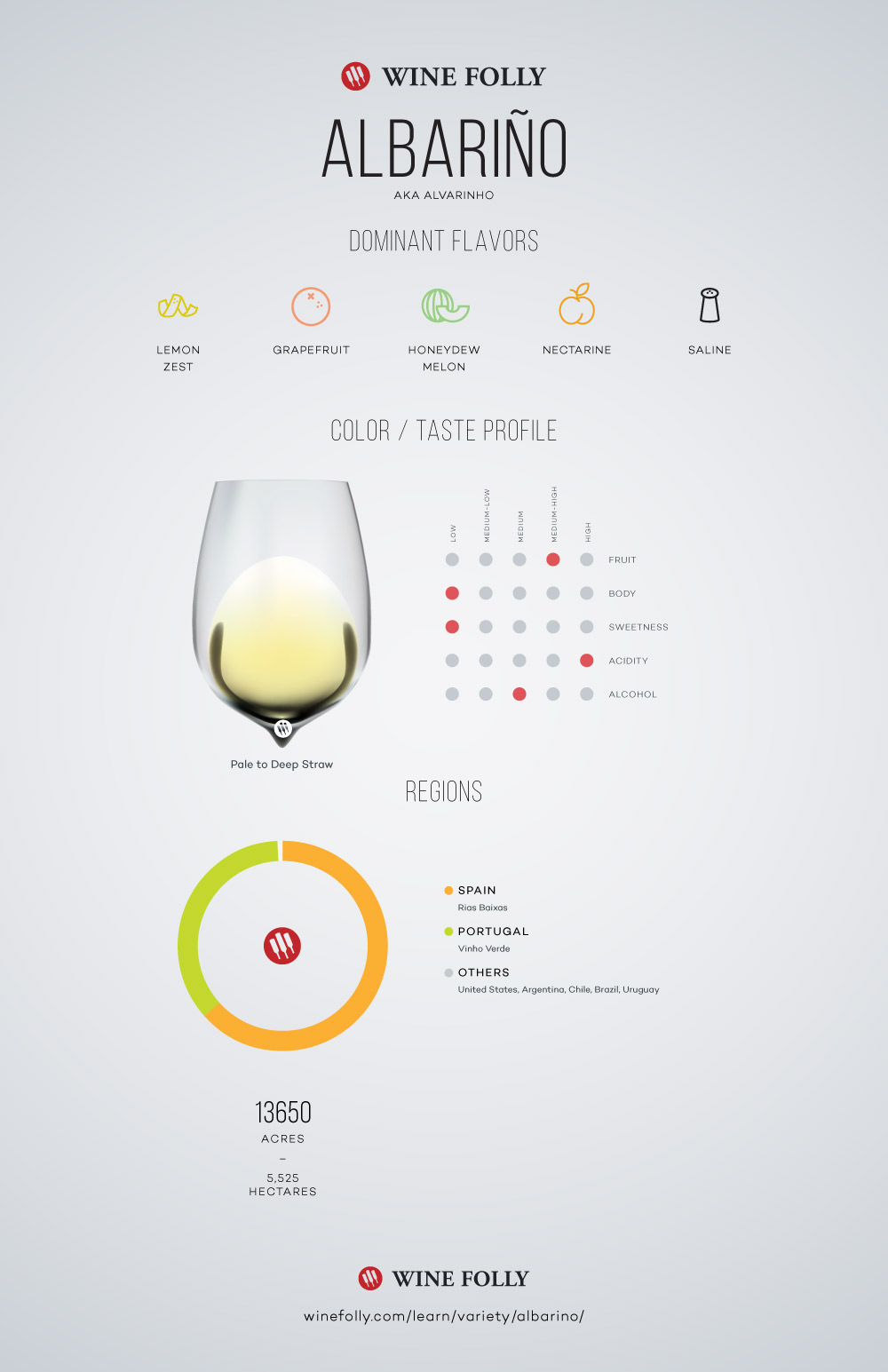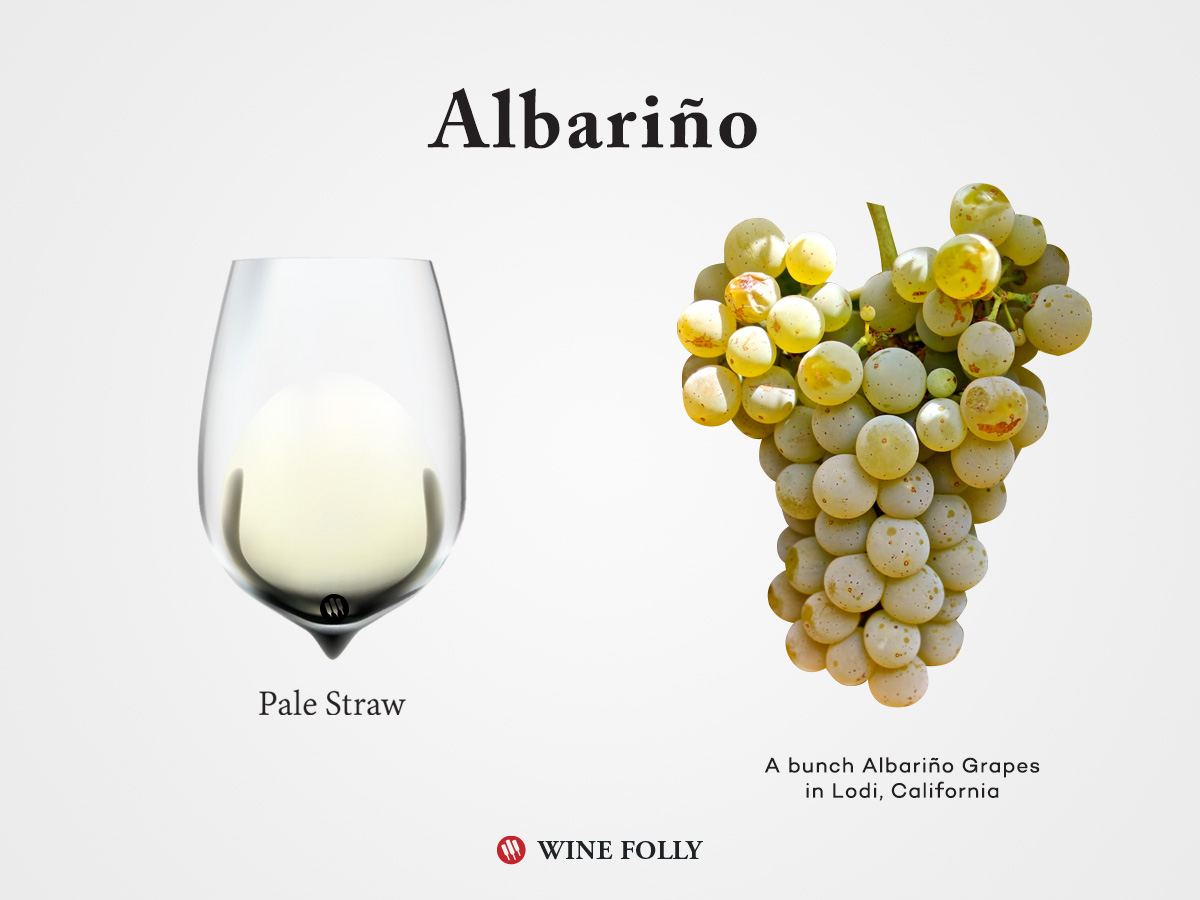Albariño wine (“alba-reen-yo”) is a high-quality, light-bodied white that grows mostly in Spain and Portugal. It’s loved for its high acidity, refreshing citrus flavors, dry taste, and subtle saltiness. For seafood lovers, Albariño is a fantastic choice for pairing with exquisite dishes like ceviche, fish tacos, seafood pasta, and shrimp.
Albariño: The Seafood Lovers’ Wine
Find out more about Albariño wine, including how to serve it, what foods pair best with it, and its geographical origin.
Albariño Tasting Notes
Albariño is a wine that deserves extended sniffing in your glass. It has a dramatic aromatic intensity as a result of the higher levels of two aromatic compound groups called terpenes and thiols. Expect aromas of lemons, limes, pear, grapefruit, honeysuckle, nectarine, and occasionally orange zest and beeswax, supported by subtle smells of freshly wetted granite and Thai basil when sniffing your glass. When you taste Albariño, you’ll instantly delight in its mouth-watering acidity, somewhat weighty mid-palate, saltiness, and long tingly finish that often has a subtle bitter note (almost like grapefruit pith).
How to Serve Albariño Wines
Albariño is an excellent cocktail/aperitif and also works marvelously well alongside light intensity foods. Serve Albariño cold, in a white wine glass, but don’t be afraid to let the wine to warm up! As Albariño increases in temperature, it changes dramatically from more minerally, beeswax, and citrus flavors to those with richer apricot, pear, and apple-like notes.
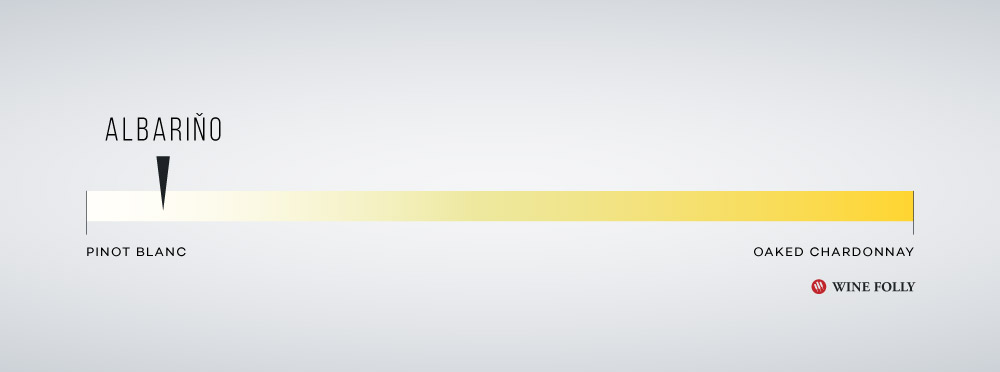
Compared to other white wines, Albariño tends to taste lighter in body.
While many Albariño wines are known to age for 5–7 years, this wine is usually best consumed a year or two after the vintage. This ensures that the wine will maintain its trademark acidity and bold, fruity aromas.
Food Pairing with Albariño
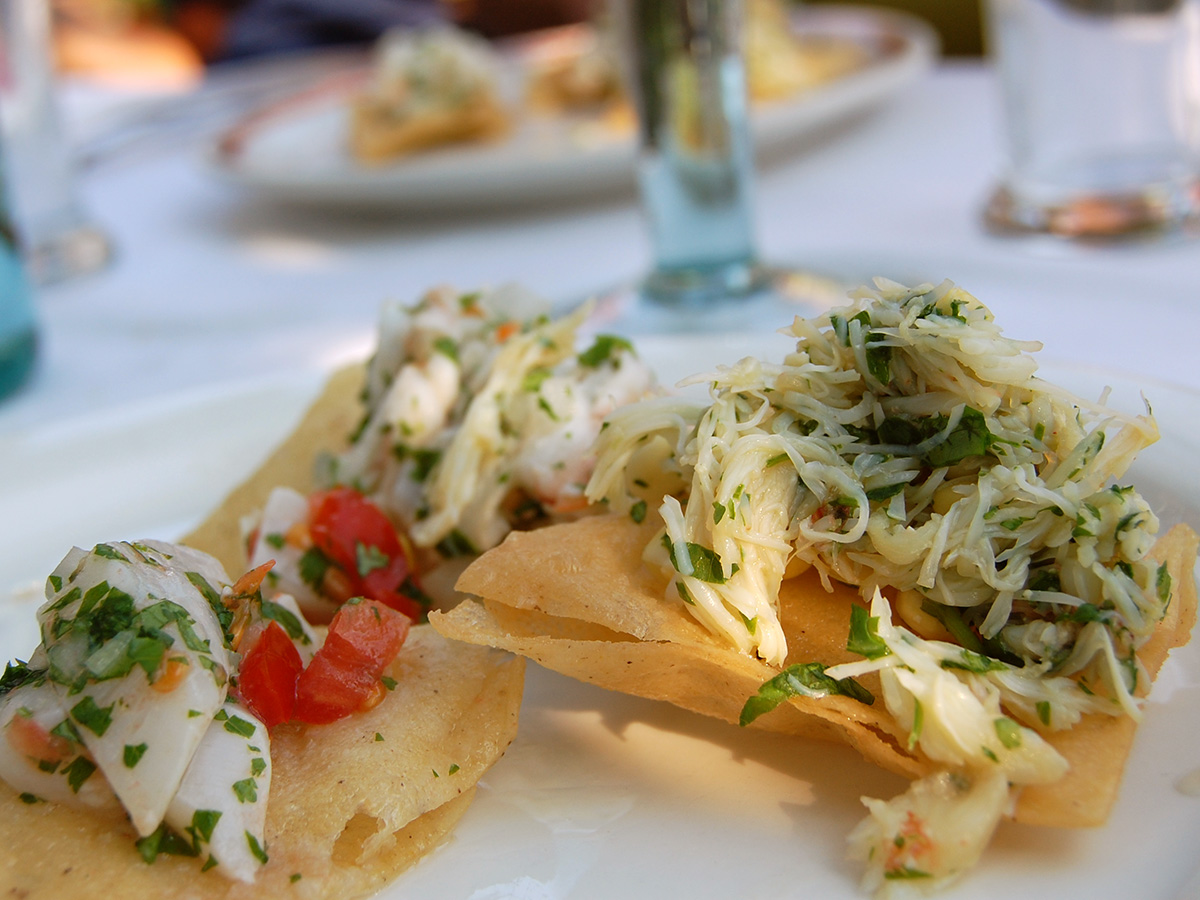
Albariño wines pair excellently with ceviche and other seafood dishes with citrus and aromatic herbs. By Stu Spivack
Albariño is an excellent food pairing wine given its high acidity and slight bitterness (phenolics), which allow it to act as a palate-cleanser to a wide variety of food textures (oily, creamy, chewy, etc). As a general rule, serve Albariño with light to middle intensity foods (including, white meats and light-colored sauces) and especially with dishes that feature citrus and/or aromatic herbs. A few cuisines to explore with Albariño include Vietnamese, Thai, modern fresh Californian, California-style Sushi, and Caribbean seafood.
Examples
- Meat and Protein
- Shrimp, Scallops, Sea Bass, Halibut, Sole, Tilapia, Octopus, Crab, Trout, Chicken, Tofu, Tofu Skin
- Cheese
- Chèvre, Feta, Cotija, Cream Cheese, Monterey Jack, Provolone, Swiss, Gruyere, and Softer Brie-Style Cheeses
- Herb/Spice
- Thai Basil, Cilantro, Mint, Shiso, Lemon, Lime, Orange, Tarragon, Chive, Green Onion, Shallot, Ginger, Galangal, Cayenne Pepper, Turmeric, Saffron, Coriander, Cumin, Sesame Seed, Poppyseed, Fennel, Nutmeg, Ajwain, Amchoor
- Vegetable
- Carrot, Jicama, Cucumber, Avocado, Butter Lettuce, Endive, Bok Choy, Celery, Onion, Cabbage, Cauliflower, Cactus, Yellow Plum, Orange, Grapefruit, Taro Root, Sweet Potato, Yam, Oyster Mushroom
Where Albariño Grows
Albariño is a wine grape indigenous to the Iberian peninsula. Commonly found in Galicia, or “Green Spain,” where vineyards receive the cooling breezes from the Atlantic ocean. You’ll find most Spanish Albariño wines labeled from Rías Baíxas (“rhee-yus by-shus”), which is a Denominacíon d’Origen. In Portugal (where the grape is known as Alvarinho), you’ll find it blended into Vinho Verde wines with other rare white varieties like Arinto, Azal, Loureiro, and Trajadura in the appellation of Vinho Verde. Beyond its homeland in the Iberian peninsula, Albariño is starting to spread internationally due to the grape’s high quality and similarity in taste to wines like Pinot Gris, Chenin Blanc, and dry Riesling. You’ll find Albariño also in California, Argentina, New Zealand, Brazil, and even Uruguay.
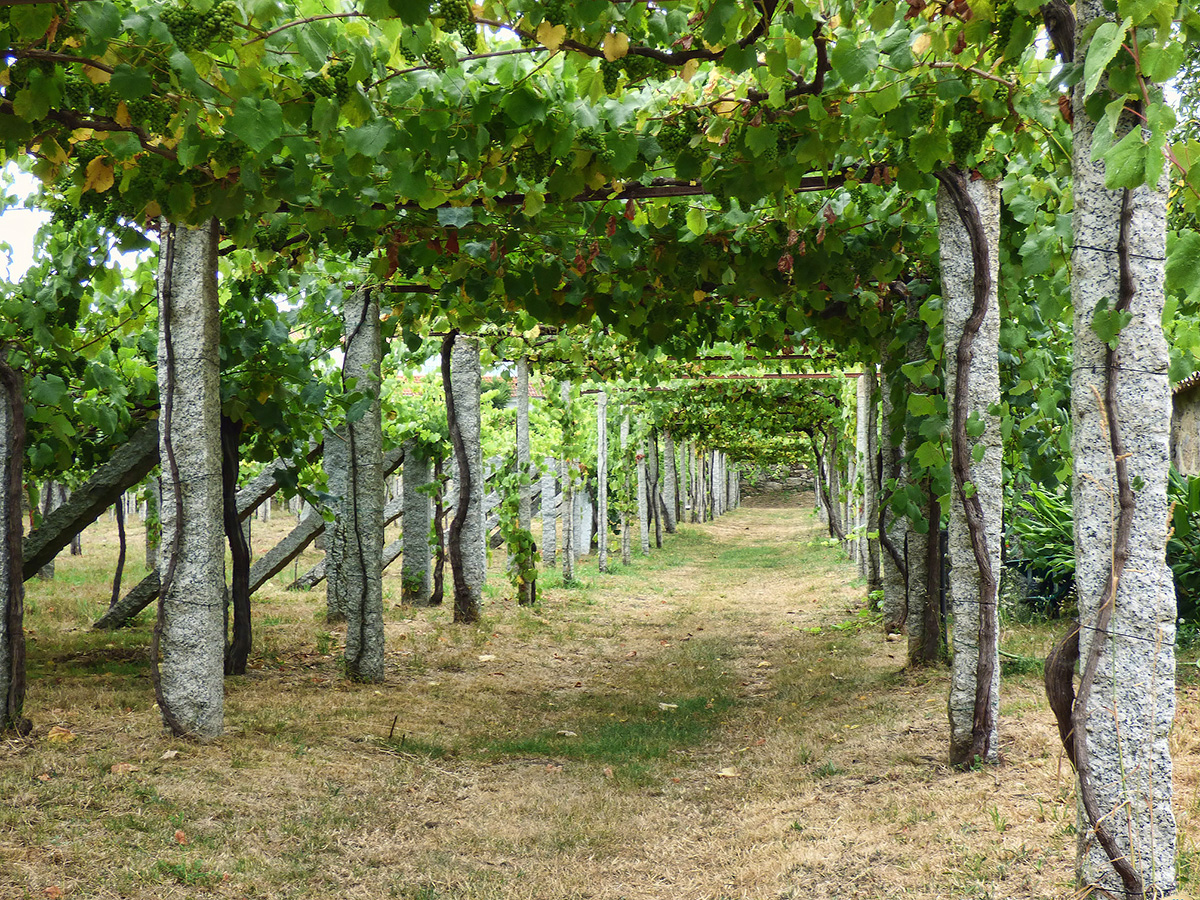
Ideal Terroir for Albariño
The region where Albariño grows in Spain is much cooler and rainier than the rest of the country. The main Albariño region, Rias Baixas, skirts along the coast and the vineyards closer to the sea are known to have the most salinity (from the ocean breezes) and highest minerality. This area has a high prevalence of deep, sandy granite soils which is thought to be the most ideal soil type for this grape.
- In warmer regions with more clay, you’ll notice Albariño wines will have riper fruit characteristics (more apricot, nectarine, and mango) and less acidity.
- In cooler regions with more sandy soils, you’ll notice Albarino will develop more citrus fruit characteristics (lime, lemon, and grapefruit) with more acidity.
